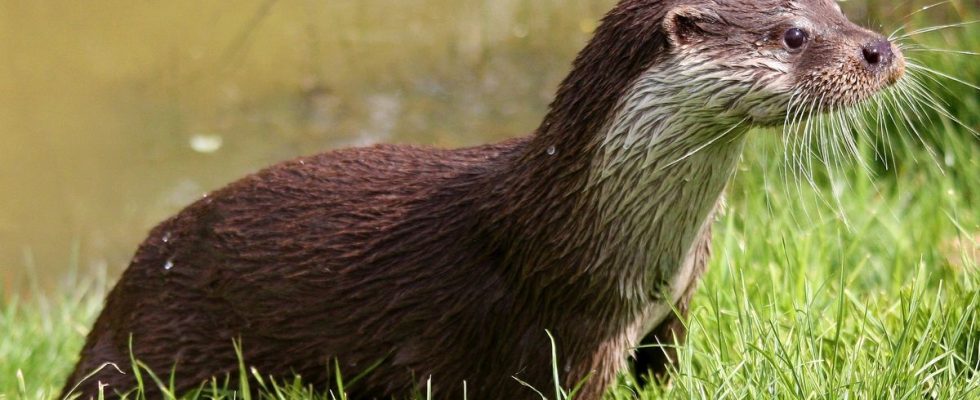Its friendly face would almost make you forget that it has long been hunted for its coat and its erroneous reputation as a pest. To the point of practically disappearing from French territory during the 1980s. Forty years later, the european otterwhose we celebrate world Day this Wednesday, is making a remarkable comeback in a large number of French departments. This semi-aquatic mammal managed to significantly repopulate the regions where it had escaped extermination (Massif Central, Brittany, Pays-de-la-Loire, part of New Aquitaine). And even to reconquer new basins, like Occitanie, Normandy, the Pyrenees or the Rhône valley.
“This is excellent news because, like any carnivore, it plays an important role in the ecosystem”, rejoices Meggane Ramos, specialist in the European otter within the Breton mammalian group. “She’s come a long way. It must be remembered that it was once present throughout France, except in Corsica, before becoming rare. In some countries, it has completely disappeared”, explains Cécile Kauffmann, coordinator of the national action plan in favor of the otter for the French Society for the Study and Protection of Mammals (SFEPM).
A low reproductive rate
It required classification as a protected species in 1981, then two national action plans (2010-2015, 2019-2028), to achieve a “slow recovery of populations”. Slow, because the otter remains a fragile animal, “very vulnerable to the degradation of its habitats”, and suffers from handicaps for its offspring. “She has a low birth rate. Sexual maturity is not reached until around 3 years of age and she will only give birth to one to three young. And then its life expectancy in the wild hardly exceeds 4 to 5 years, ”says Meggane Ramos.
If counting the population seems “impossible” because of the very great discretion of the animal, the otter is followed by a network of naturalists thanks to its footprints, its droppings (called épreintes) and some food remains. “We also use photographic or video traps. It is a meticulous, uncertain, but essential research work, ”underlines Meggane Ramos. An approach which today makes it possible to authenticate its presence in many wetlands, including rivers with urbanized banks, like the Loire. However, the waterways of the Grand Est and Hauts-de-France seem to be an exception. “There have been attempts at reintroduction in Alsace, but it hasn’t really worked,” says Cécile Kauffmann.
Damage to fish farms
A relatively solitary animal (unlike its cousin the sea otter), the European otter evolves in a basin 5 to 20 km long in search of fish, crayfish or batrachians. “We often think that the otter is a witness to the good quality of the waters but, in fact, it goes mainly where it finds fish and shelter, underlines Meggane Ramos. Its presence has been detected in areas where the water is of very average quality, such as Le Gouëssant in the Côtes-d’Armor. His gluttony encourages him, from time to time, to get into fish farms, especially trout. To the chagrin of fish farmers, the damage can be significant. ” We have a animator who raises awareness professionals and provides them with technical assistance. When the facilities are well protected, there is no longer a problem”, reports the leader of the national otter plan.
If it has no predators in the wild, the main threat to the European otter remains human activities, in particular road traffic. “There are structures, dams, which force him to cross roads, collisions can then occur, deplores Cécile Kauffmann. Fortunately, there are more and more specific fittings designed for her, such as bench seats under the bridges. They participate in the recolonization of the otter. A few trappings targeting nutria, invasive rodents with which the otter is often confused, are still sometimes fatal to it, as are dog bites. “Overall, she is doing better and better but it is too early to think she is definitely safe. It still deserves our vigilance,” insists Cécile Kauffmann.

